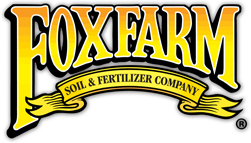January 9, 2024
Contamination in mushroom grow kits can manifest in various forms. Recognizing contamination early is essential to prevent it from affecting your mushroom crop. Here are common signs of contamination:
- Unusual Colors:
- Healthy mycelium should be white and cotton-like. Contamination might manifest as green, blue, yellow, or pink spots or streaks. These colors typically indicate the presence of unwanted molds or bacteria.
- Foul Odor:
- Contaminated substrates often emit unpleasant or foul odors. A healthy mushroom culture should have a clean and mushroom-like smell. If you notice any unusual or off-putting odors, it could be a sign of contamination.
- Cottony Growth:
- Fuzzy or cottony growth that differs from the typical appearance of healthy mycelium may indicate contamination. This could be caused by molds or other unwanted microorganisms competing with the mushrooms.
- Slimy Texture:
- If the substrate becomes excessively wet and slimy, it might be a sign of bacterial contamination. Bacteria can outcompete the mycelium and hinder mushroom growth.
- Mold Growth:
- The appearance of visible mold colonies on the substrate or on the surface of the casing layer is a clear sign of contamination. Mold can take various forms and colors, so any deviation from the expected mycelial growth could be problematic.
- Slow or Stalled Growth:
- Contamination can impede the growth of mycelium. If you observe slow or stalled growth compared to the expected colonization timeline, contamination may be a factor.
- Abnormal Mushroom Growth:
- If mushrooms develop abnormally, with strange shapes, colors, or textures, it could be a result of contamination affecting the fruiting bodies.
What to Do if Contamination is Suspected:
- Isolate the Contaminated Area:
- If you notice signs of contamination, isolate the affected area immediately. This may involve removing contaminated substrate or, in extreme cases, discarding the entire kit.
- Adjust Conditions:
- Check and adjust environmental conditions to create a more favorable environment for healthy mycelial growth. Proper humidity, fresh air exchange, and temperature control can help mitigate contamination risks.
- Improve Sterilization Practices:
- Review and improve sterilization practices during substrate preparation and inoculation to minimize the introduction of contaminants.
- Start Fresh if Necessary:
- In some cases, especially if contamination is widespread or persistent, it may be best to start with a new, clean kit or substrate.
Remember that prevention is key, and maintaining a clean and sterile environment throughout the mushroom cultivation process is crucial to minimizing the risk of contamination. If contamination is suspected, regular monitoring and prompt action can help increase the chances of a successful mushroom harvest.




